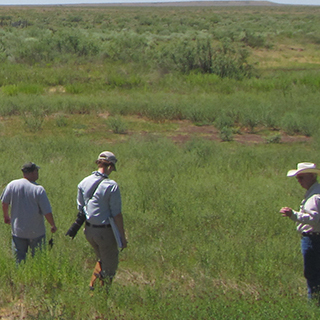Completed Projects
NAVAL HISTORIC ARTIFACT COLLECTION CURATION
The Curator of the Navy, under the Naval History and Heritage Command (NHHC), maintains a collection of artifacts going back to the founding of the Republic up through current operations. The Headquarters Historic Artifact Collection exceeds 300,000 artifacts. These heritage assets come from a variety of sources, including terrestrial and submerged archeological resources, government transfers and private donations. CIRE is providing curation services to the NHHC including: processing, cataloging, inventorying, condition reporting, and photographing of artifacts in the collection (District of Columbia, Virginia).
USS MAINE GUN RESTORATION
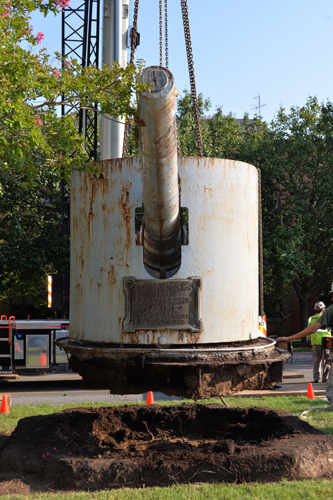 Best known for her loss in Havana Harbor on the evening of February 15, 1898, the USS Maine was sent to protect US interests during the Cuban revolt against Spain. She exploded suddenly, without warning and sank quickly, killing nearly three-quarters of her crew. A mounted 6-inc 30 Cal gun from the ship that, until recently, resided on exhibit in the Naval Yard, Washington DC. On Saturday, August 6, 2016, CIRE led the effort to have the USS Maine gun excavated, and moved off-site. Currently, it is being restored by Clemson University’s Warren Lasch Conservation Center, Clemson, South Carolina, subsequently to be returned to the Navy Yard for display. (District of Columbia, South Carolina)
Best known for her loss in Havana Harbor on the evening of February 15, 1898, the USS Maine was sent to protect US interests during the Cuban revolt against Spain. She exploded suddenly, without warning and sank quickly, killing nearly three-quarters of her crew. A mounted 6-inc 30 Cal gun from the ship that, until recently, resided on exhibit in the Naval Yard, Washington DC. On Saturday, August 6, 2016, CIRE led the effort to have the USS Maine gun excavated, and moved off-site. Currently, it is being restored by Clemson University’s Warren Lasch Conservation Center, Clemson, South Carolina, subsequently to be returned to the Navy Yard for display. (District of Columbia, South Carolina)
USS SCORPION ARTIFACT CURATION
USS Scorpion was a self-propelled floating artillery battery in commission with the US Navy from 1812-1814. It was sloop-rigged, but could also be propelled by oars. Ordered to the Potomac River to protect Washington, DC, the Scorpion was the flagship of Commodore Joshua Barney, with Barney’s son acting as her captain. On August 21, 1814, facing overwhelming odds, near the mouth of the Patuxent River, the flotilla engaged the British forcing Barney’s squadron to retreat. Abandoning the ships, Barney and his men then marched on to defend Washington, leaving Scorpion and the rest of the flotilla to be burned by a detail of men rather than be captured by the British. For more than a century, the remains of some of the flotilla were visible in the Patuxent River mud, but mid-20th Century looters removed all trace. In 1979, marine researchers began exploring the site and bringing up remnants of the ships, including the Scorpion, for curation. CIRE is providing personnel/staffing to further assess, document and conserve artifacts in the Curator, Art and Underwater Archaeology Branches of the NHHC with emphasis on those archaeological artifacts recovered in 2010 and 2011 (District of Columbia).
US AIR FORCE – TRIBAL RELATIONS CONSULTATION PACKAGE
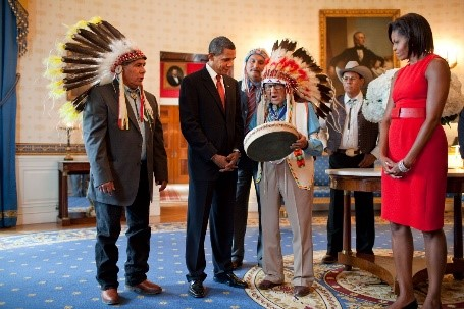 The Air Force has published goals that require wing and base commanders to appoint installation Tribal Liaisons to move fully engage the leaders of their affiliated, federally-recognized tribes, as well as meet together with tribal leaders at least twice per year. These goals are to increase the effectiveness of Air Force consultation with federally-recognized tribes, increase collaborative planning, and more fully meet federal law requirements to consult with tribes concerned about natural and cultural resources on agency lands. CIRE is providing the US Air Force a Sustainable Tribal Consultation Program to implement and educate about best consultation practices and logistics of running meetings, and a training package coupled with an instructional workshop dedicated to guiding USAF commanders and/or staff through the consultation program. (All USAF bases, excluding Hawaii)
The Air Force has published goals that require wing and base commanders to appoint installation Tribal Liaisons to move fully engage the leaders of their affiliated, federally-recognized tribes, as well as meet together with tribal leaders at least twice per year. These goals are to increase the effectiveness of Air Force consultation with federally-recognized tribes, increase collaborative planning, and more fully meet federal law requirements to consult with tribes concerned about natural and cultural resources on agency lands. CIRE is providing the US Air Force a Sustainable Tribal Consultation Program to implement and educate about best consultation practices and logistics of running meetings, and a training package coupled with an instructional workshop dedicated to guiding USAF commanders and/or staff through the consultation program. (All USAF bases, excluding Hawaii)
INVASIVE SPECIES MANAGEMENT PLAN
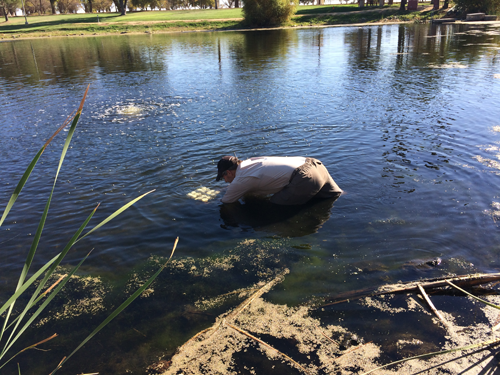
Travis Air Force Base, in compliance with the Endangered Species Act, the Sikes Act Improvement Act, and the Migratory Bird Treaty Act, is developing a Species Management Plan and Work Plan. CIRE is providing researcher expertise to write a comprehensive plan for overall management of invasive species, as well as a non-native species control plan for bird airstrike hazard (BASH) reduction, and stormwater compliance. (California)
CULTURAL RESOURCES TECHNICAL EXPERTISE
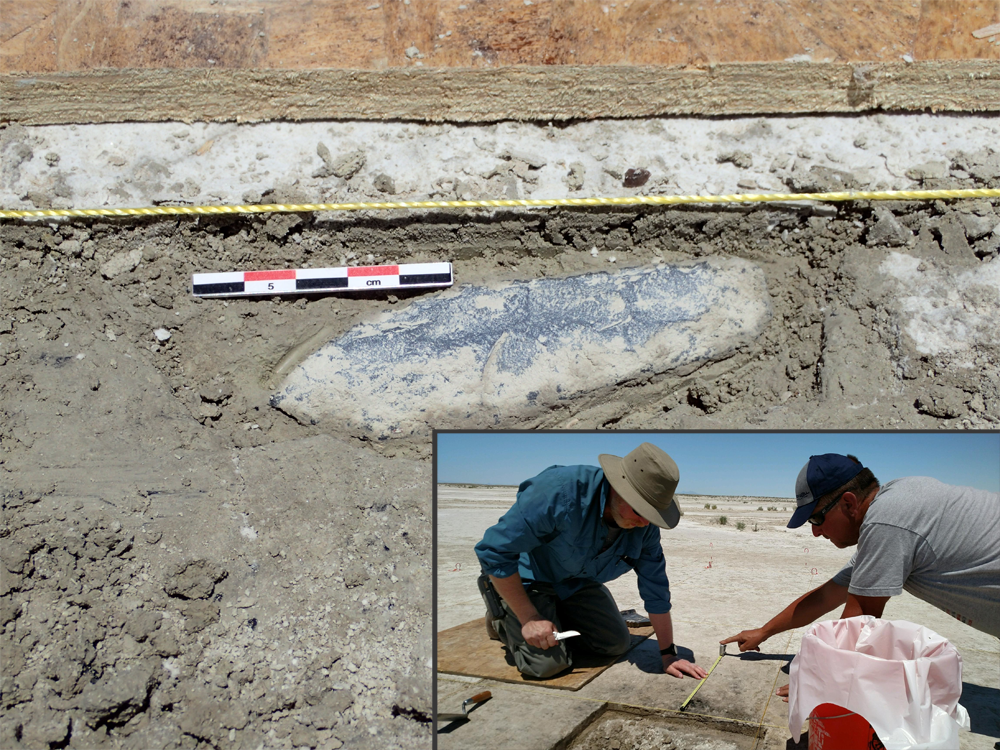 Hill Air Force Base/Utah Test and Training Range and Mountain Home Air Force Base are, in accordance with the Air Force’s mandate, to identify, preserve, and manage cultural resources on its properties, surveying these state and territorial lands. CIRE has selected areas to locate and catalogue all cultural resources, and to evaluate resources for inclusion in the National Register of Historic Places (Utah and Idaho).
Hill Air Force Base/Utah Test and Training Range and Mountain Home Air Force Base are, in accordance with the Air Force’s mandate, to identify, preserve, and manage cultural resources on its properties, surveying these state and territorial lands. CIRE has selected areas to locate and catalogue all cultural resources, and to evaluate resources for inclusion in the National Register of Historic Places (Utah and Idaho).
CULTURAL RESOURCES SURVEY & INVENTORY
 Archeological surveys and inventories at Warren Grove Gunnery Range are part of the
Archeological surveys and inventories at Warren Grove Gunnery Range are part of the ENDANGERED SPECIES: NEW MEXICO MEADOW JUMPING MOUSE
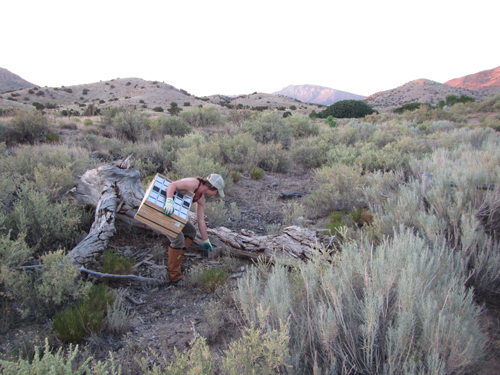 Threatened and/or endangered species are becoming more extensive across the US, and the US Air Force is working diligently to monitor species on their installations. CIRE is charged with surveying for the Meadow Jumping Mouse (Zapus hudsonius
Threatened and/or endangered species are becoming more extensive across the US, and the US Air Force is working diligently to monitor species on their installations. CIRE is charged with surveying for the Meadow Jumping Mouse (Zapus hudsonius ENDANGERED SPECIES: NORTHERN LONG-EARED BAT
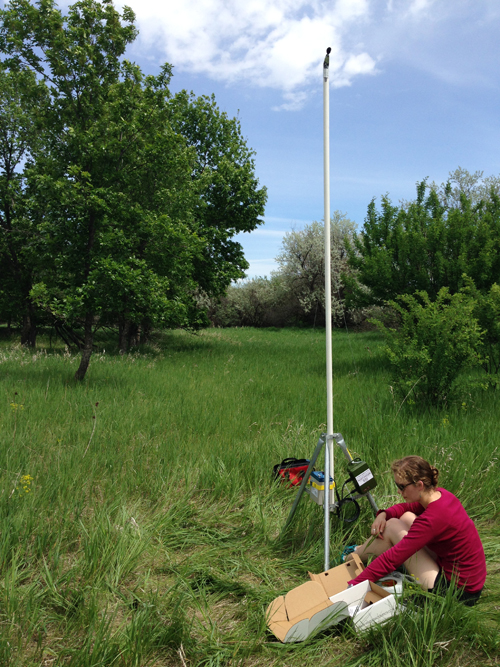 The surveying for the Northern Long-Eared Bat launched two teams to deploy equipment to detect the presence of these bats on 14 different Air Force bases throughout the mid-west, over a 3-month period. CIRE is working with well-known bat expert, Nathan Schwab, who will analyze and report on the data collected. (Arkansas, California, Florida, Kansas, Illinois, Missouri, Nebraska, New Mexico, North Dakota, Ohio, Oklahoma, South Dakota, Texas)
The surveying for the Northern Long-Eared Bat launched two teams to deploy equipment to detect the presence of these bats on 14 different Air Force bases throughout the mid-west, over a 3-month period. CIRE is working with well-known bat expert, Nathan Schwab, who will analyze and report on the data collected. (Arkansas, California, Florida, Kansas, Illinois, Missouri, Nebraska, New Mexico, North Dakota, Ohio, Oklahoma, South Dakota, Texas)
ENDANGERED SPECIES: BUTTERFLIES AND FLORA
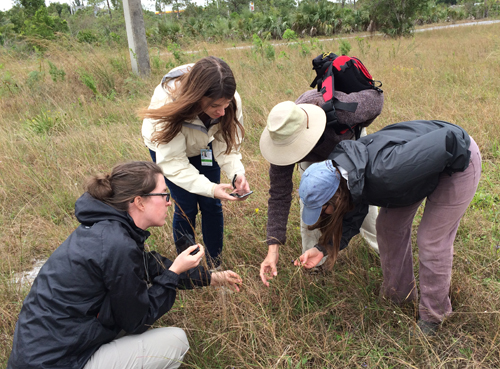 Surveying for Carter’s Small-Flowered Flax, Florida Brickell-Bush, Bartram’s Hairstreak Butterfly, and the Florida Leafwing Butterfly on Homestead Air Reserve Base is nearing completion. With several fieldwork sessions logged, the research team is developing protocols for species survival and protection. (Florida)
Surveying for Carter’s Small-Flowered Flax, Florida Brickell-Bush, Bartram’s Hairstreak Butterfly, and the Florida Leafwing Butterfly on Homestead Air Reserve Base is nearing completion. With several fieldwork sessions logged, the research team is developing protocols for species survival and protection. (Florida)
ENDANGERED SPECIES: AMPHIBIANS
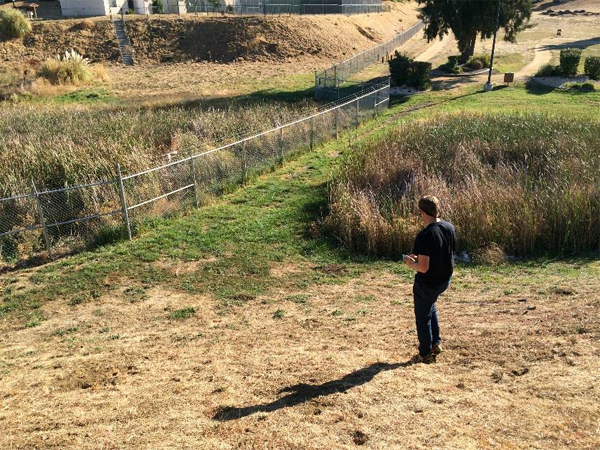 The Western Spadefoot Toad, Foothill Yellow-Legged Frog, Tricolored Blackbird, and the Northern Western Pond Turtle are all be traced and recorded at Travis and Beale Air Force Bases as part of the on-going conscientiousness the US Air Force is applying to its military installations in compliance with the Endangered Species Act of 1973. (California)
The Western Spadefoot Toad, Foothill Yellow-Legged Frog, Tricolored Blackbird, and the Northern Western Pond Turtle are all be traced and recorded at Travis and Beale Air Force Bases as part of the on-going conscientiousness the US Air Force is applying to its military installations in compliance with the Endangered Species Act of 1973. (California)
CHEYENNE MOUNTAIN AIR FORCE STATION CULTURAL LANDSCAPE SURVEY
Until 2006, Cheyenne Mountain was the center for the US Space Command and NORAD, which monitored the air space of Canada and the United States through a worldwide system for early warnings of missiles, space systems, and foreign aircraft. Located within Cheyenne Mountain under 2,000 feet of granite on five acres, it became fully operational on February 6, 1967. Today the Air Force Station is used as a pilot training center. CIRE will be surveying and evaluating the Station with researcher anthropological expertise. It will provide guidance for historical preservation and compliance with the National Historic Preservation Act. (Colorado)
FOREST STAND INVENTORY
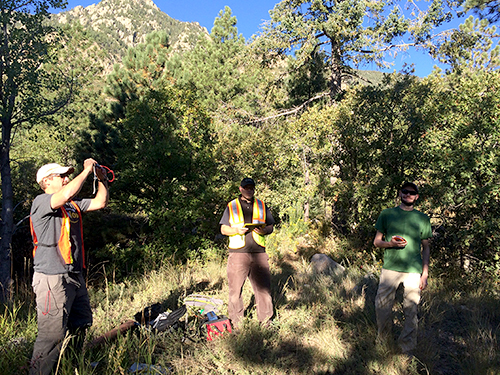 CIRE will conduct a comprehensive vegetation and tree stand exam, as well as identify and assess the wildland fuel load on the Front Range of the Rocky Mountains’ forest within Cheyenne Mountain AFS property. This examination will generate a report describing forest stand conditions, forest health, and wildland fuel hazard concerns, management support, and recommendations for incorporation into an Integrated Natural Resources Management Plan. (Colorado)
CIRE will conduct a comprehensive vegetation and tree stand exam, as well as identify and assess the wildland fuel load on the Front Range of the Rocky Mountains’ forest within Cheyenne Mountain AFS property. This examination will generate a report describing forest stand conditions, forest health, and wildland fuel hazard concerns, management support, and recommendations for incorporation into an Integrated Natural Resources Management Plan. (Colorado)
INTENSIVE ARCHAEOLOGICAL INVENTORIES
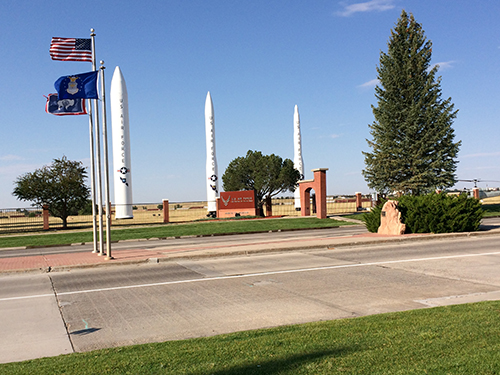 CIRE will perform Class III, intensive field archaeological inventories at both Fairchild and FE Warren Air Force Bases. The research teams will locate, identify and describe all cultural resources that can reasonably be detected from an on-the-ground inspection; evaluate each cultural resource for eligibility in the National Register of Historic Place; pinpoint sources of adverse impacts to the identified cultural resources, and recommend management strategies. (Washington, Wyoming)
CIRE will perform Class III, intensive field archaeological inventories at both Fairchild and FE Warren Air Force Bases. The research teams will locate, identify and describe all cultural resources that can reasonably be detected from an on-the-ground inspection; evaluate each cultural resource for eligibility in the National Register of Historic Place; pinpoint sources of adverse impacts to the identified cultural resources, and recommend management strategies. (Washington, Wyoming)
HISTORIC PRESERVATION AND MAINTENANCE MANUALS
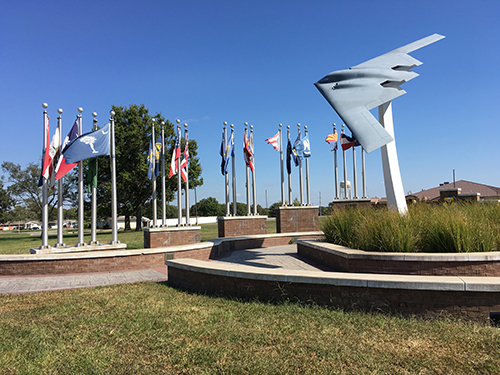 Executing the development of Historic Preservation and Maintenance Manuals for McConnell, and Whiteman Air Force Bases have begun via a team of experts under this CIRE project. The manual: establish processes for successful integration of the AFB mission, and develop standard operating procedures for care of those properties in compliance with applicable laws. The manuals will outline routine and emergency standard operating procedures for protection of historic resources at each installation. (Kansas, Missouri)
Executing the development of Historic Preservation and Maintenance Manuals for McConnell, and Whiteman Air Force Bases have begun via a team of experts under this CIRE project. The manual: establish processes for successful integration of the AFB mission, and develop standard operating procedures for care of those properties in compliance with applicable laws. The manuals will outline routine and emergency standard operating procedures for protection of historic resources at each installation. (Kansas, Missouri)
DISCOVERY AT HILL AIR FORCE BASE/UTAH TEST AND TRAINING RANGE
In accordance with the Air Force’s mandate to identify, preserve, and manage cultural resources on its properties. A CIRE-hired team has expanded an earlier project at Hill AFB/UTTR, now named the Wishbone site. While the entire 3,500‐year Paleoindian record can be represented in the area, the oldest artifacts are identifiable by being, counterintuitively, the least weathered. Radiocarbon dating places the site at 12,300 years old, the oldest open‐air hearth feature documented in the Great Basin. (Utah)
MULTI-SITE HISTORIC BUILDING INVENTORY
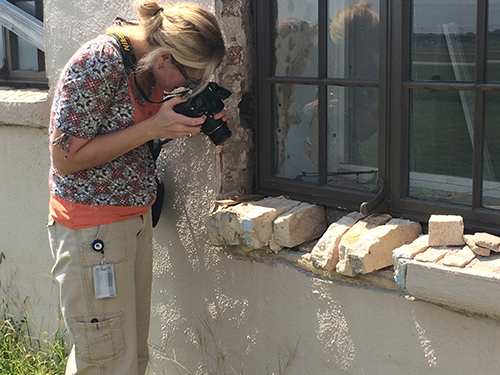 An intensive level inventory of historic buildings located on lands managed by Mountain Home, Scott, McConnell, Offutt, Minot, and Fairchild Air Force Bases. An assessment of their eligibility for listing on the National Register of Historic Places will be completed under this CIRE project. (Idaho, Illinois, Kansas, Nebraska, North Dakota, Washington)
An intensive level inventory of historic buildings located on lands managed by Mountain Home, Scott, McConnell, Offutt, Minot, and Fairchild Air Force Bases. An assessment of their eligibility for listing on the National Register of Historic Places will be completed under this CIRE project. (Idaho, Illinois, Kansas, Nebraska, North Dakota, Washington)
IMPACT ASSESSMENT
Cattle, particularly in the West, impact the lands, buildings, and archaeological sites that may be located on any given military property in many ways. CIRE is charged with assessing the impact of cattle grazing in and around the Juniper Butte Range, located at Mountain Home AFB. (Idaho)
AMERICAN INDIAN CONSULTATION
To more effectively consult with the 5 American Indian tribes who have been identified as having ancestral ties to the land managed by Mountain Home AFB, CIRE is developing an Installation Tribal Relations Management Plan. This plan will assist the base when working and communicating with these tribes and their interests and connections to the land at Mountain Home. (Idaho)
MOUNTAIN HOME AFB SAGE-GROUSE NOISE STUDY
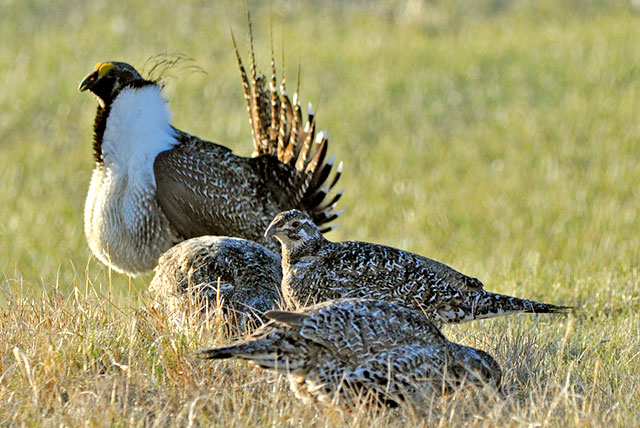 At Mountain Home AFB CIRE is conducting a Sage-Grouse Noise Study to provide Air Force compliance with Endangered Species Act (ESA) requirements. CIRE will evaluate noise effects from the F-15 fighter jets stationed there on sage-grouse nesting sites and measurement of rearing success. The study will also include recommendations for mitigating and reducing potential impacts on sage-grouse. (Idaho)
At Mountain Home AFB CIRE is conducting a Sage-Grouse Noise Study to provide Air Force compliance with Endangered Species Act (ESA) requirements. CIRE will evaluate noise effects from the F-15 fighter jets stationed there on sage-grouse nesting sites and measurement of rearing success. The study will also include recommendations for mitigating and reducing potential impacts on sage-grouse. (Idaho)
FOREST STAND MANAGEMENT AND THINNING
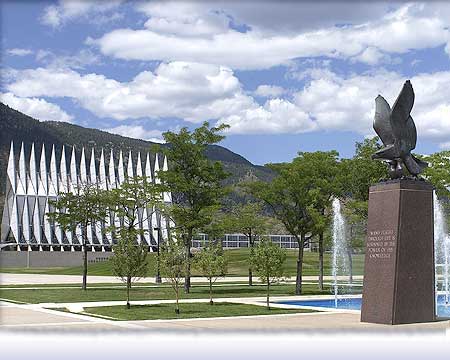 The main objective of this project is to provide comprehensive tree management for the home of the US Air Force Academy in Colorado. The forests at the Academy have faced severe stressors such as drought, bark beetle attack, tussock moth, and overstock conditions over the past several years. CIRE’s project will be to address several forest management directives to include removing dead trees, pruning, debarking, seeding, planting, and forest thinning to enhance and restore the property. (Colorado)
The main objective of this project is to provide comprehensive tree management for the home of the US Air Force Academy in Colorado. The forests at the Academy have faced severe stressors such as drought, bark beetle attack, tussock moth, and overstock conditions over the past several years. CIRE’s project will be to address several forest management directives to include removing dead trees, pruning, debarking, seeding, planting, and forest thinning to enhance and restore the property. (Colorado)
CULTURAL RESOURCE DISCOVERY AT AVON PARK AIR FORCE RANGE
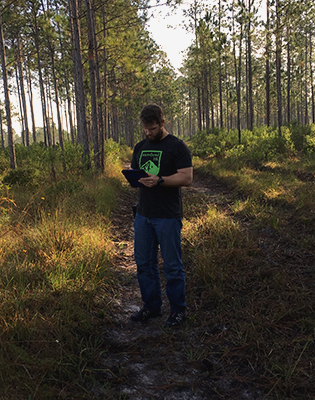 CIRE will play a key role providing archeological field surveys for Avon Park Air Force Range, Florida, meeting the Secretary of Interior’s Professional Standards of Archaeology. The scope of the project is to identify and evaluate the significance of a range of archaeological sites within the base and assist in updating the Florida Master Site File with information resulting from this work. (Florida)
CIRE will play a key role providing archeological field surveys for Avon Park Air Force Range, Florida, meeting the Secretary of Interior’s Professional Standards of Archaeology. The scope of the project is to identify and evaluate the significance of a range of archaeological sites within the base and assist in updating the Florida Master Site File with information resulting from this work. (Florida)
AVON PARK TO CELEBRATE 75TH ANNIVERSARY
CIRE is providing its expertise in researching, and gathering data to provide Avon Park AFB with promotional materials that will commemorate the base's 75th Anniversary. CIRE will also be designing and producing pamphlets and brochures for this event. (Florida)
TRADITIONAL CULTURAL EXPERTISE APPLIED AT GRAND FORKS
CIRE is inventorying four areas already culturally researched to identify possible Traditional Cultural Property (TCP) associated with the 23 federally recognized tribes identified as having ancestral territories on lands now managed by Grand Forks Air Force Base. This work is to ensure that National Register of History Places (NRHP) eligibility recommendations using the North Dakota Cultural Resources Survey site forms are properly executed. (North Dakota).
ARCHAEOLOGICAL INVENTORIES AT WARREN GROVE
Continuation of archaeological surveying and inventorying at Warren Grove Gunnery Range will keep CIRE staff managing their cultural resources to the highest degree. National Register of Historic Places eligibility evaluations will also continue to be of high priority while scanning the remaining 2,000 acres. Once completed, a regional conference, as well as a national conference presenting information about the survey results will be undertaken. (New Jersey)
UNION CREEK BANK EVALUATION
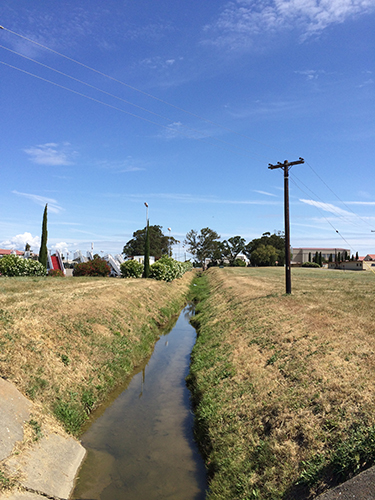 Union Creek splits into two branches before entering Travis Air Force Base, located near Sacramento, CA. The western branch of the creek has developed large areas of bank slumping, and drainage erosion from parking lots and fuel storage. As a means of restoring and controlling sediment, a survey that CIRE will initiate of this branch is required. The survey will provide data to determine what types of repairs/modifications need adoption to correct these issues. (California)
Union Creek splits into two branches before entering Travis Air Force Base, located near Sacramento, CA. The western branch of the creek has developed large areas of bank slumping, and drainage erosion from parking lots and fuel storage. As a means of restoring and controlling sediment, a survey that CIRE will initiate of this branch is required. The survey will provide data to determine what types of repairs/modifications need adoption to correct these issues. (California)
CULTURAL RESOURCES DISCOVERY AT NELLIS AIR FORCE BASE
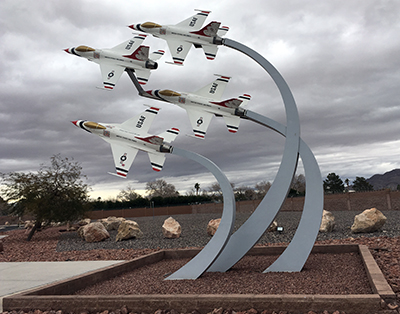 CIRE is leading this Air Force project to provide archeological surveying at Nellis Air Force Base in the Las Vegas Valley of Clark County, Nevada. The CIRE team’s scope of work will identify, preserve, and manage historic cultural resources on the Nellis properties that are based upon existing inventories’ data initiated in 2015. This report will comply with Nevada State Historic Preservation for use by decision-makers at Nellis AFB for future management and preservation. (Nevada)
CIRE is leading this Air Force project to provide archeological surveying at Nellis Air Force Base in the Las Vegas Valley of Clark County, Nevada. The CIRE team’s scope of work will identify, preserve, and manage historic cultural resources on the Nellis properties that are based upon existing inventories’ data initiated in 2015. This report will comply with Nevada State Historic Preservation for use by decision-makers at Nellis AFB for future management and preservation. (Nevada)
NATURAL RESOURCES PROGRAM SUPPORT BEALE AND TRAVIS AIR FORCE BASES
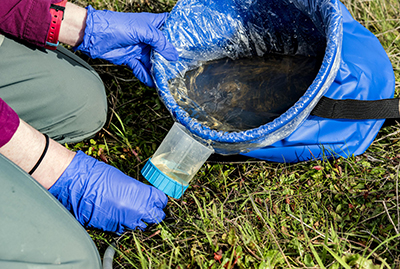 CIRE is continuing work started in a previous Scope of Work surveying for rare, threatened and endangered species at Travis and Beale Air Force Bases. CIRE is using genetic testing looking for Western Spadefoot Toad. Water samples collected from Beale and Travis AFB’s are analyzed for the eDNA markers indicating the presence or absence of endangered toads. (California)
CIRE is continuing work started in a previous Scope of Work surveying for rare, threatened and endangered species at Travis and Beale Air Force Bases. CIRE is using genetic testing looking for Western Spadefoot Toad. Water samples collected from Beale and Travis AFB’s are analyzed for the eDNA markers indicating the presence or absence of endangered toads. (California)
URBAN TREE INVENTORY AND ANALYSIS MALMSTROM AIR FORCE BASE
CIRE is conducting an inventory of all MAFB installation trees to update the Natural Resources database. Data collected will also be analyzed and summarized to develop prioritized management recommendations. A recommended landscape plant list for future landscape planning and design will also be developed as part of the inventory and analysis. (Montana)
WHITEMAN AIR FORCE BASE HARDWOOD INVASIVE SPECIES SUPPORT
CIRE is helping Whiteman AFB implement invasive tree and shrub removal from two identified sections of newly acquired property. Following removal of undesired trees and shrubs CIRE will oversee seeding and the establishment of naturalized pasture grass in the specified area. CIRE is also providing recommendations to maintain invasive species control in the treatment area. (Missouri)
